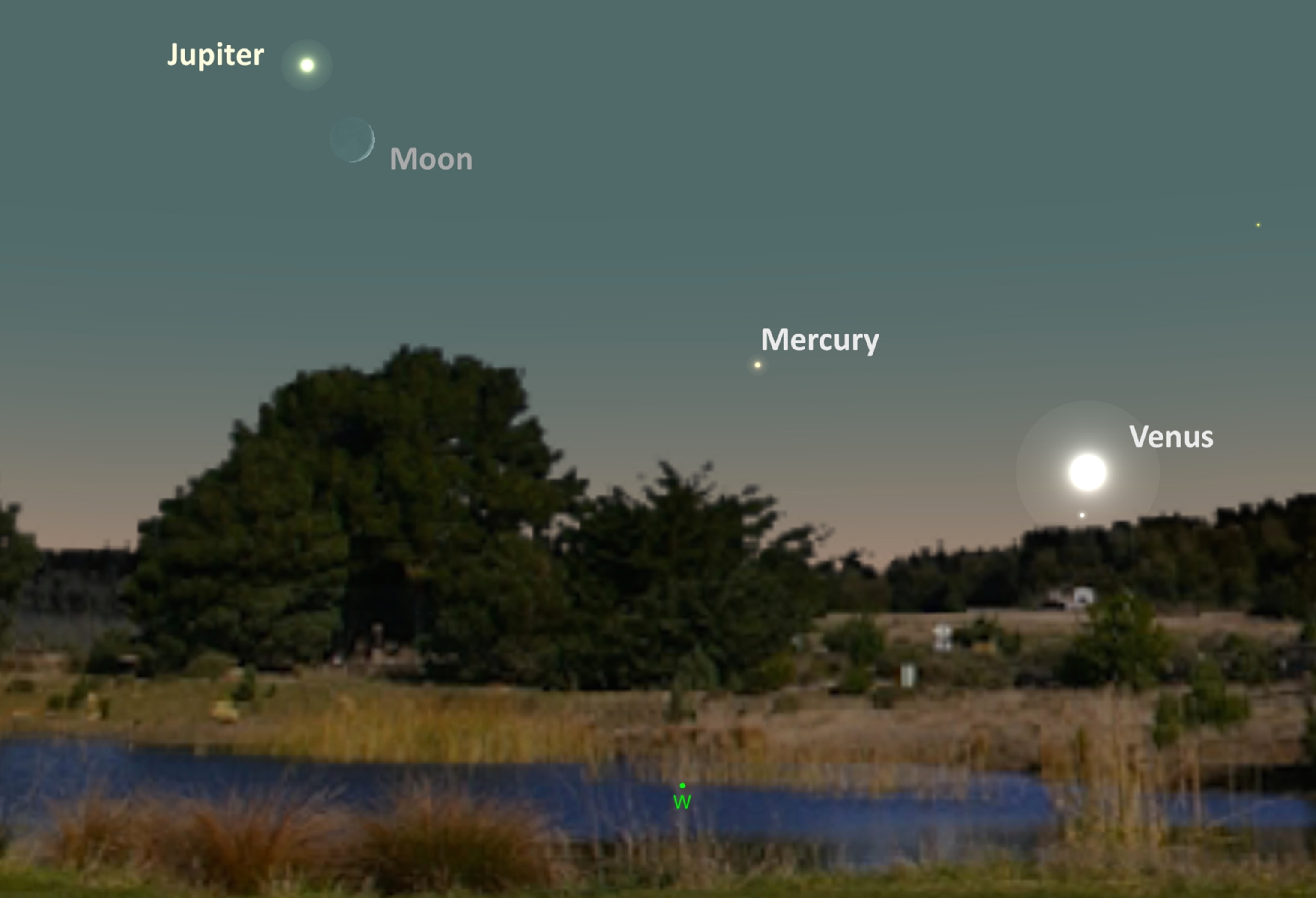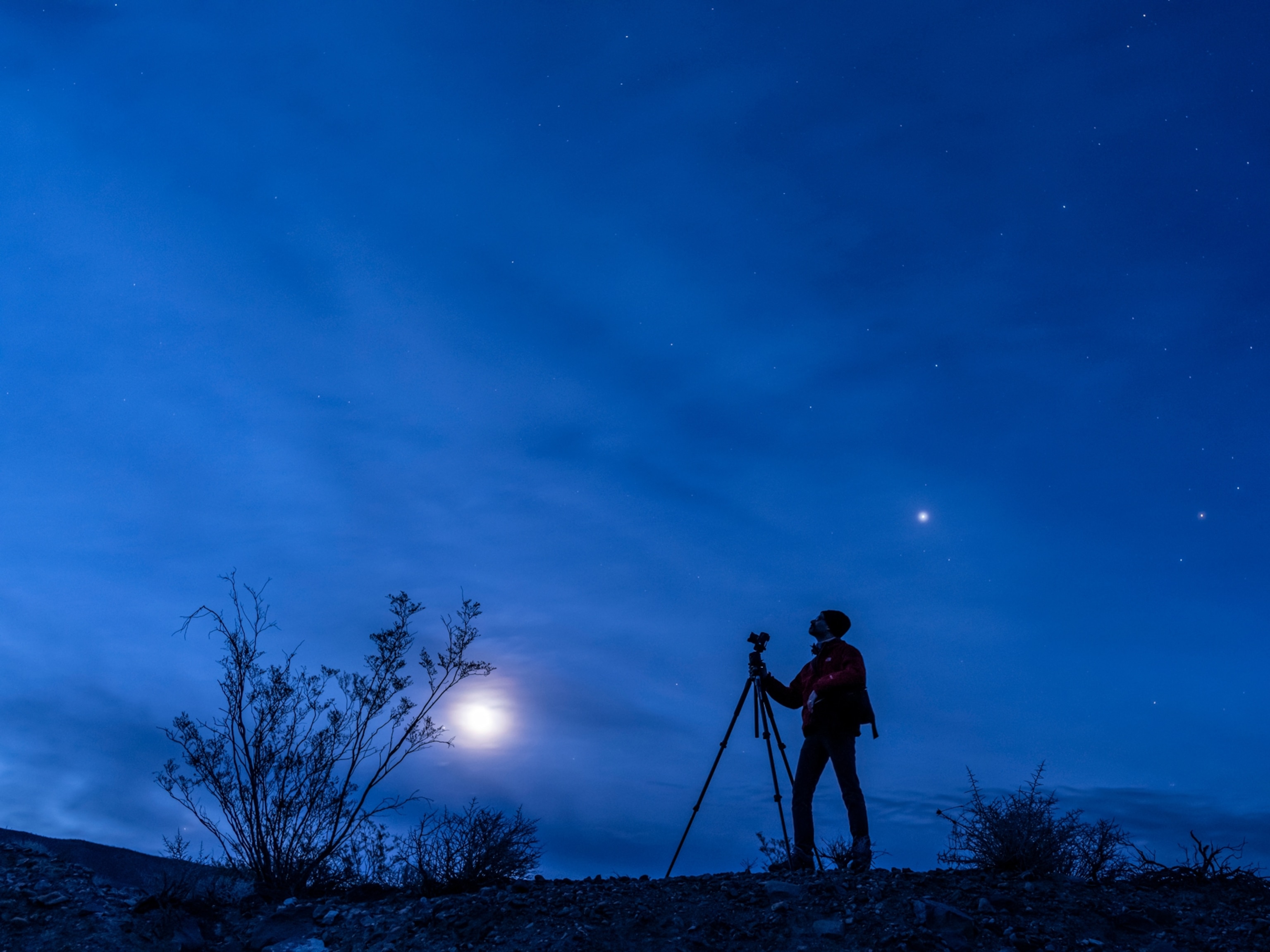
This Week’s Night Sky: See Planets Line Up at Sunset
Also this week, watch out for early-bird meteors and Earth lighting up the moon’s dark side.
Worlds Align. Skywatchers will get a great observing challenge at sunset on August 1, as Jupiter, Mercury, and Venus form a diagonal line in the very low western horizon.
Since Venus and Mercury will be battling the glare of the setting sun, the best views of these two innermost worlds in the solar system will be had through binoculars. Venus will be only about five degrees above the local horizon, equal to the width of your clenched fist held at arm’s length. The entire planetary lineup will stretch about 27 degrees across the sky, roughly as wide as the space between your thumb and little finger when stretched apart and held at arm’s length.

As an added challenge, see if you can spot Regulus, the lead star in the constellation Leo, the lion, crashing the planet party. Look for Regulus halfway along an imaginary line between Venus and Mercury. The star will seem faint by comparison and will be embedded in the glare of sunset, so it may be difficult to spot depending on your local viewing conditions. The best viewing opportunities will be for observers in southerly latitudes, such as the southern U.S. and Central America.
Perseids Start. As of August 3, look for early-bird shooting stars belonging to the Perseid meteor shower during the overnight hours. While the official peak is still over a week away, patient skywatchers should be able to spot at least a half dozen meteors an hour between local midnight and the pre-dawn hours. Stay tuned for a full viewer’s guide next week.

Venus Meets Leo. Head outside 15 to 20 minutes after local sunset on August 4 and see if you can spot a stunningly close encounter between the planet Venus and the bright star Regulus. The pair will appear to be separated by just one degree, equal to two lunar disks. Check out this cosmic duo the next night and you will notice that they have switched positions in the sky.
Moon and Mercury. As twilight sets in on August 4, you can also try your hand at viewing a razor-thin crescent moon next to the faint planet Mercury. The pair will appear to be only six degrees above your local horizon, and the two objects will be only two degrees apart, equal to the width of your two middle fingers held at arm’s length. While Mercury may be a challenge to locate with the naked eye, binoculars will make the search easy thanks to the moon pointing the way.

Jupiter Duo. By August 5, the widening crescent moon will form a viewing treat as it appears to hang just below Jupiter in the darkening skies. The pairing of these two worlds should be quite eye-catching, as they will be only one degree apart, a spacing easily filled by the width of your thumb held at arm’s length.
Also see if you can view what is known as Earthshine, when you can see the darker portion of the crescent moon thanks to sunlight reflecting off Earth and all its reflective clouds, ice, and oceans.
Clear skies!
Andrew Fazekas, the Night Sky Guy, is the author of Star Trek: The Official Guide to Our Universe. Follow him on Twitter, Facebook, and his website.





